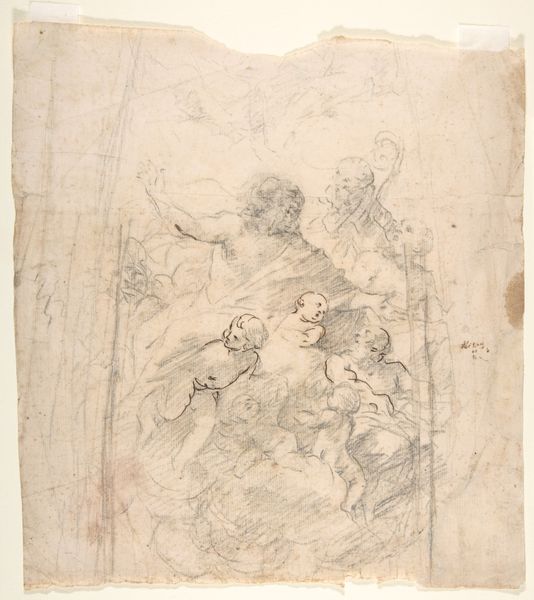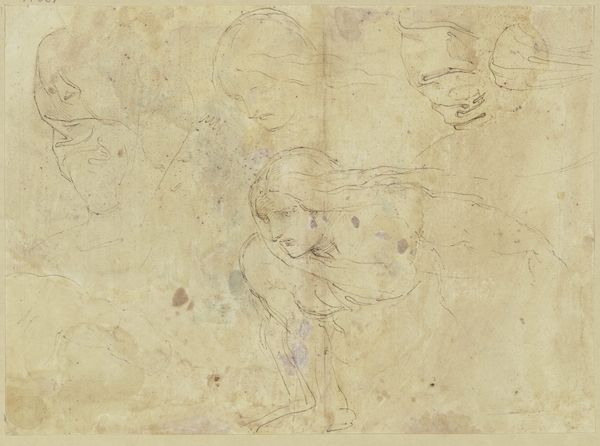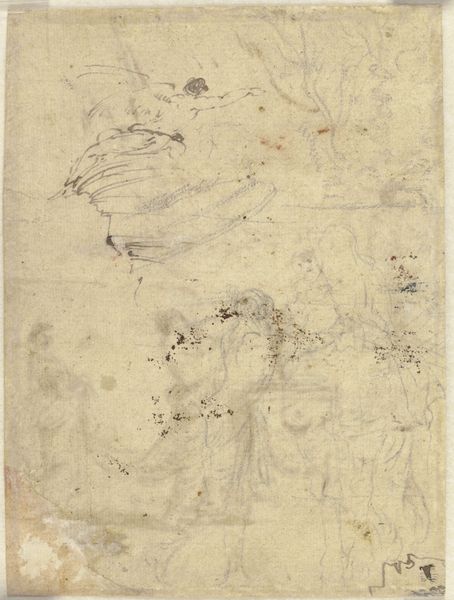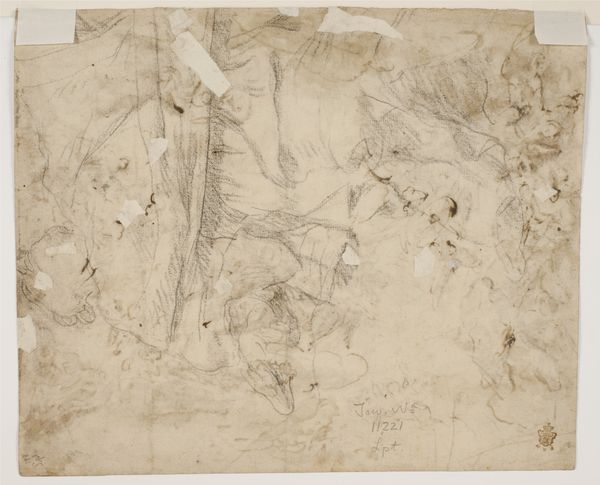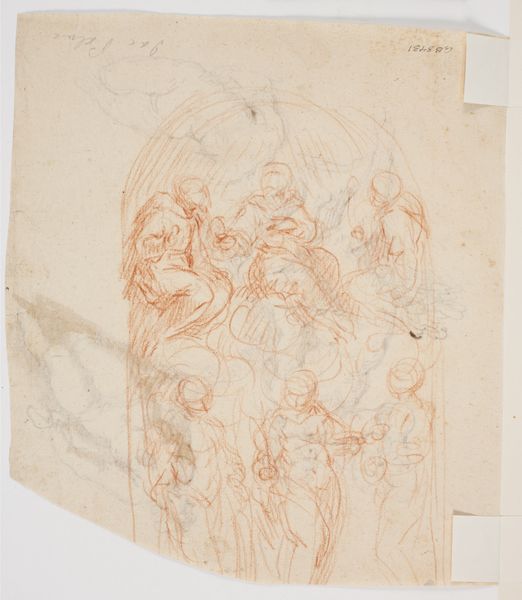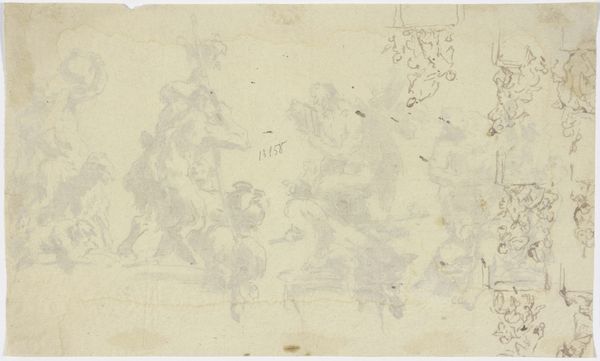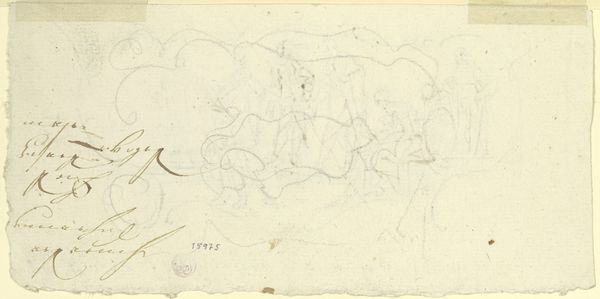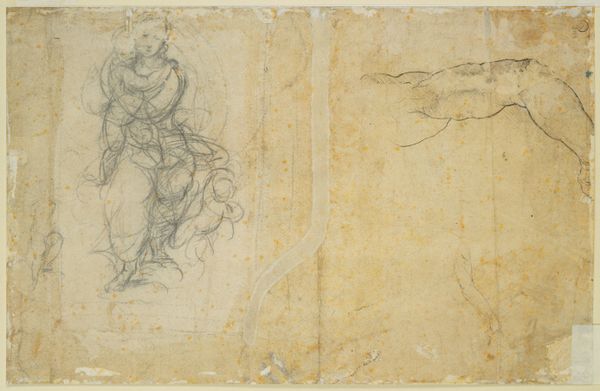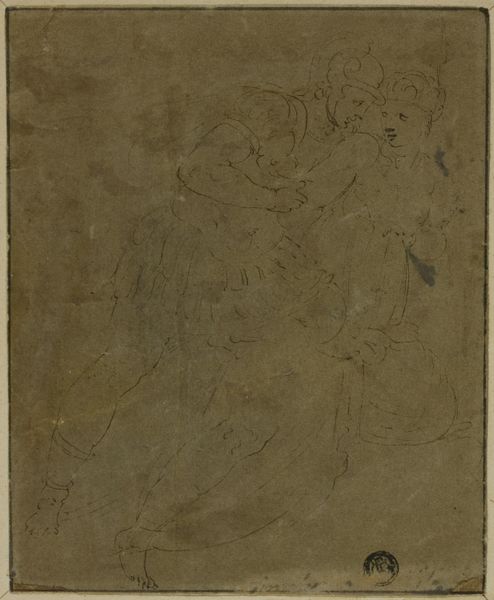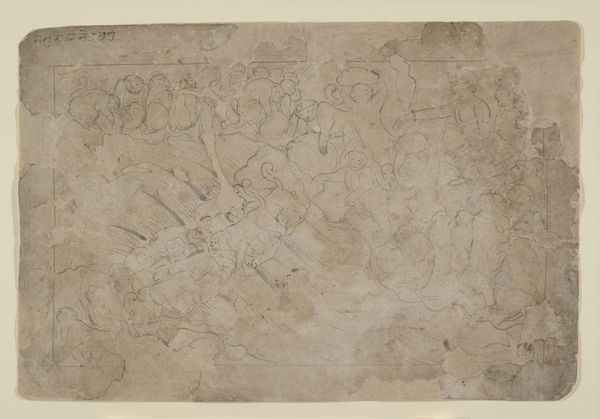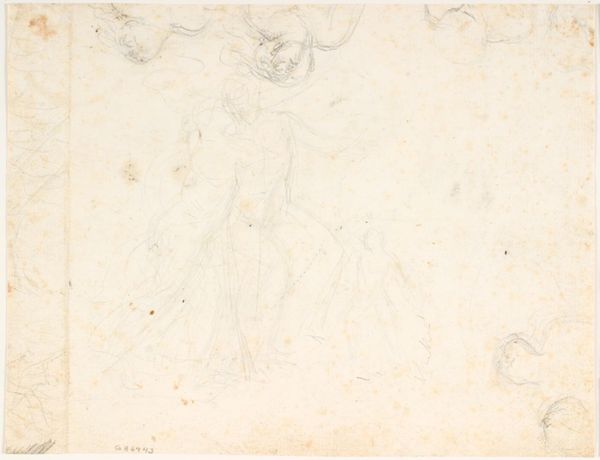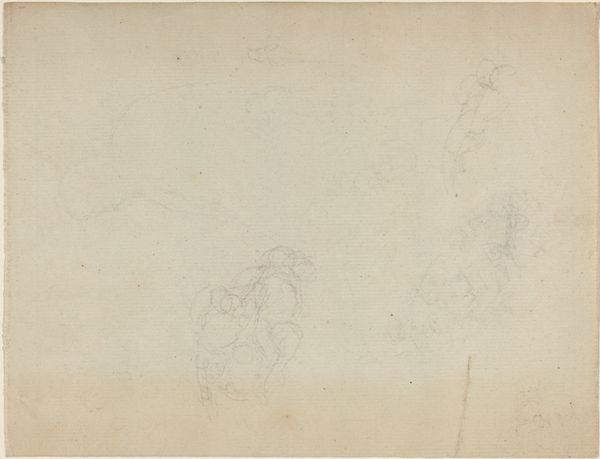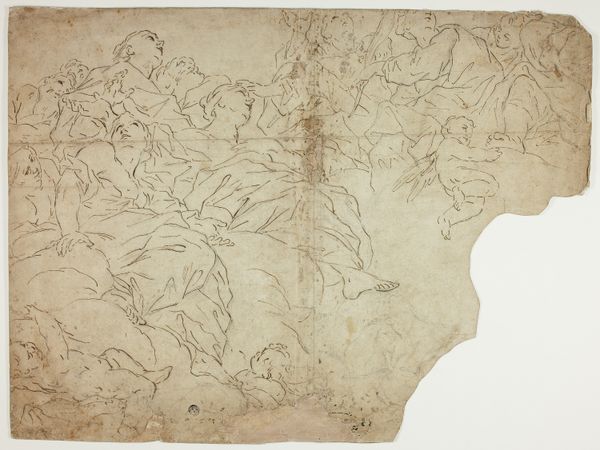
The Virgin Nursing the Christ Child, in a Glory of Angels (recto); Studies for seated figures of Christ and God the Father in red chalk (verso) 1690 - 1758
0:00
0:00
drawing, tempera, pencil
#
drawing
#
allegory
#
baroque
#
tempera
#
figuration
#
pencil
#
virgin-mary
#
angel
#
christ
Dimensions: 11-7/16 x 9-15/16 in. (29.0 x 25.2 cm)
Copyright: Public Domain
Curator: Ah, the flurry of angelic wings, the tender intimacy of a mother's love... Nicola Maria Rossi captured such warmth in "The Virgin Nursing the Christ Child, in a Glory of Angels." It's from somewhere between 1690 and 1758. The delicate lines, it feels almost like a whispered prayer, don't you think? Editor: My first impression is this incredible density of figures— a multitude surrounding Mary and the child, all interwoven with such soft pencil and tempera. The sketchiness really evokes a dream-like vision, yet the Virgin’s figure has a sharp confidence. I wonder about the way it upholds and, in some ways, challenges societal ideals of motherhood? Curator: Challenges? Maybe. He presents the idealized version, yes, but within that Baroque drama is also an undeniable, human tenderness. I see the exhaustion in her brow, the unwavering devotion in her eyes, the slight slump of the shoulder holding the child. It becomes more about intimacy than grandeur, a subtle wink at the world amidst a holy proclamation, so to speak. Editor: Right. And that depiction of motherhood also intersects with a powerful hierarchy, doesn't it? Rossi places her at the center of a divine tableau, and yet she’s undeniably maternal. How does that positioning shape our understanding of power, both then and now? What does it mean to have the "mother" at the forefront of an ideal political or social sphere, especially during a period deeply rooted in the church and patriarchy? Curator: It’s interesting. He uses traditional symbolism--angels, the glory, Mary as Madonna--but it isn't cold. It has an undeniable vivacity. Perhaps Rossi understood how to infuse life into accepted iconography, letting the human story leak through the theological structures. It’s precisely that push and pull I think, that keeps me returning to it. Editor: Exactly. I agree that tension is what gives the work enduring resonance. Looking closer, one sees not just religious allegory, but questions around representation, gender, and authority woven into the lines. Curator: Yes, so, we are left to wonder about the humanity beneath, or intertwined, dare I say, with the sacred stories? Food for thought indeed, hidden in plain sight in this seemingly simple, but quietly evocative sketch. Editor: Ultimately, it reveals a depth within the sacred and an underlying political consciousness within the representation itself, which makes experiencing art all the more enriching.
Comments
No comments
Be the first to comment and join the conversation on the ultimate creative platform.
